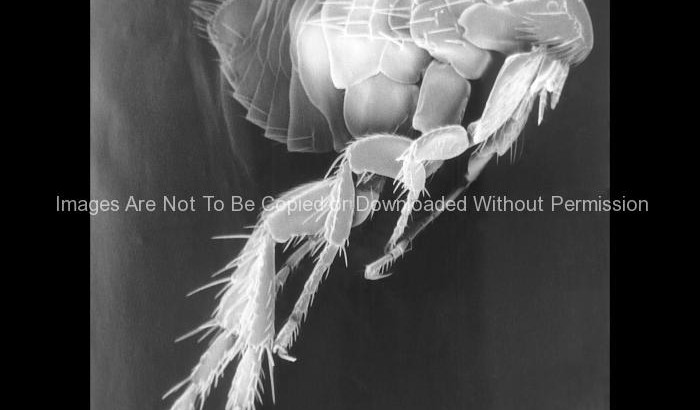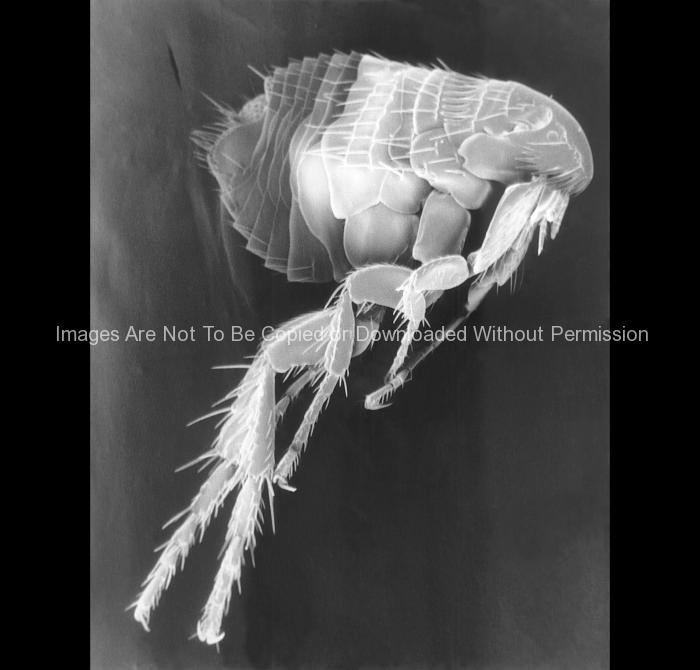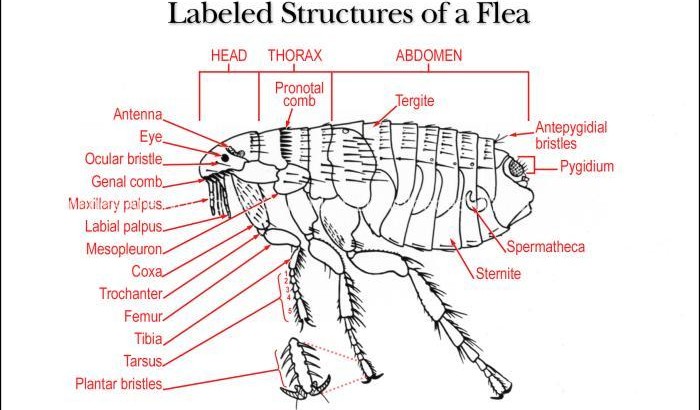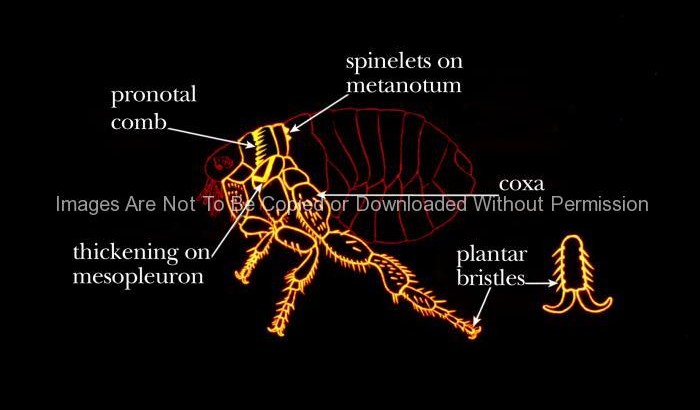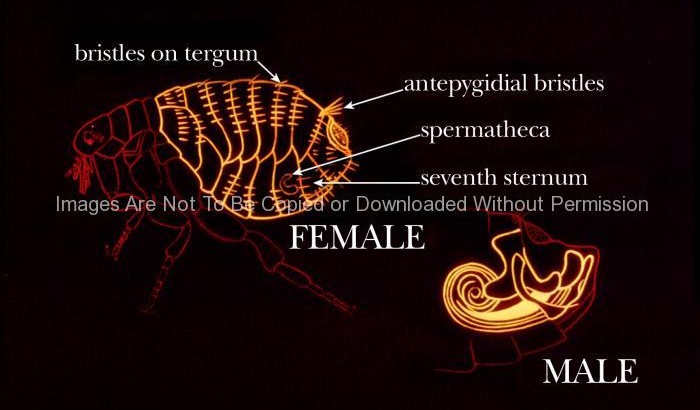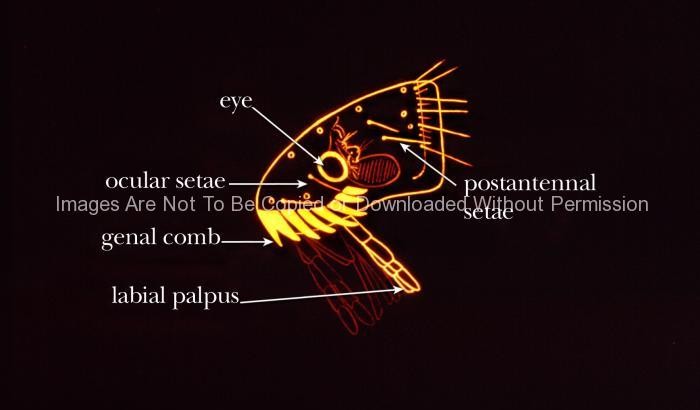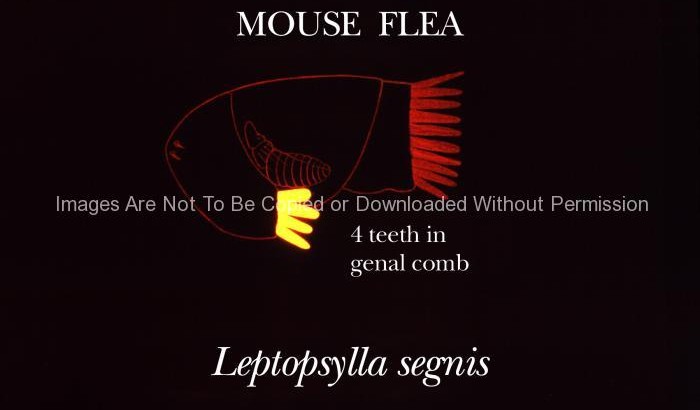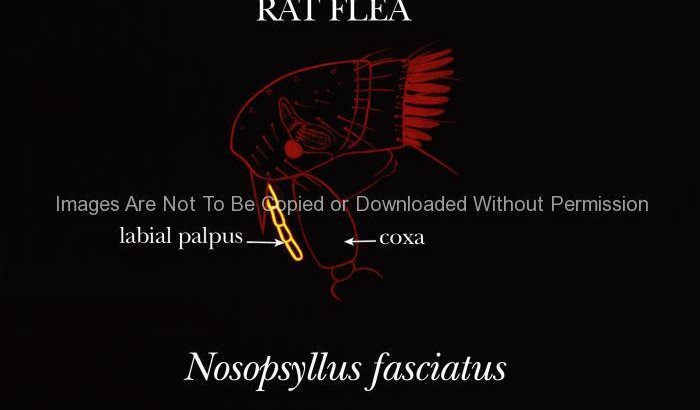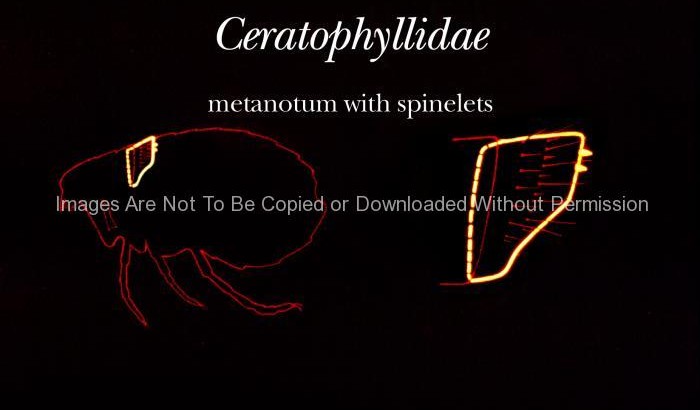Electron Micrograph of a Parasitic Flea
Insect Stock Photos – Fleas
Photos and electron micrographs of fleas
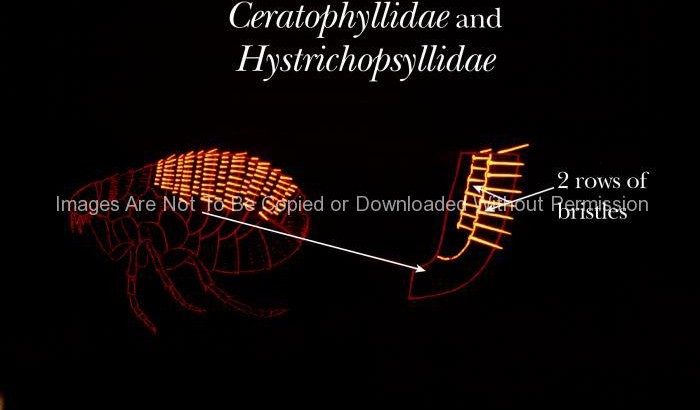
Differences in Ceratophyllidae and Hystrichopsyllidae Fleas
Note the difference in the arrangement of the tergal bristles on Ceratophyllidae and Hystrichopsyllidae fleas.
In general, fleas in the families Ceratophyllidae and Hystrichopsyllidae have two or more rows of bristles on each abdominal tergite, which are the plate-like, exoskeletal components of the flea’s abdomen.
